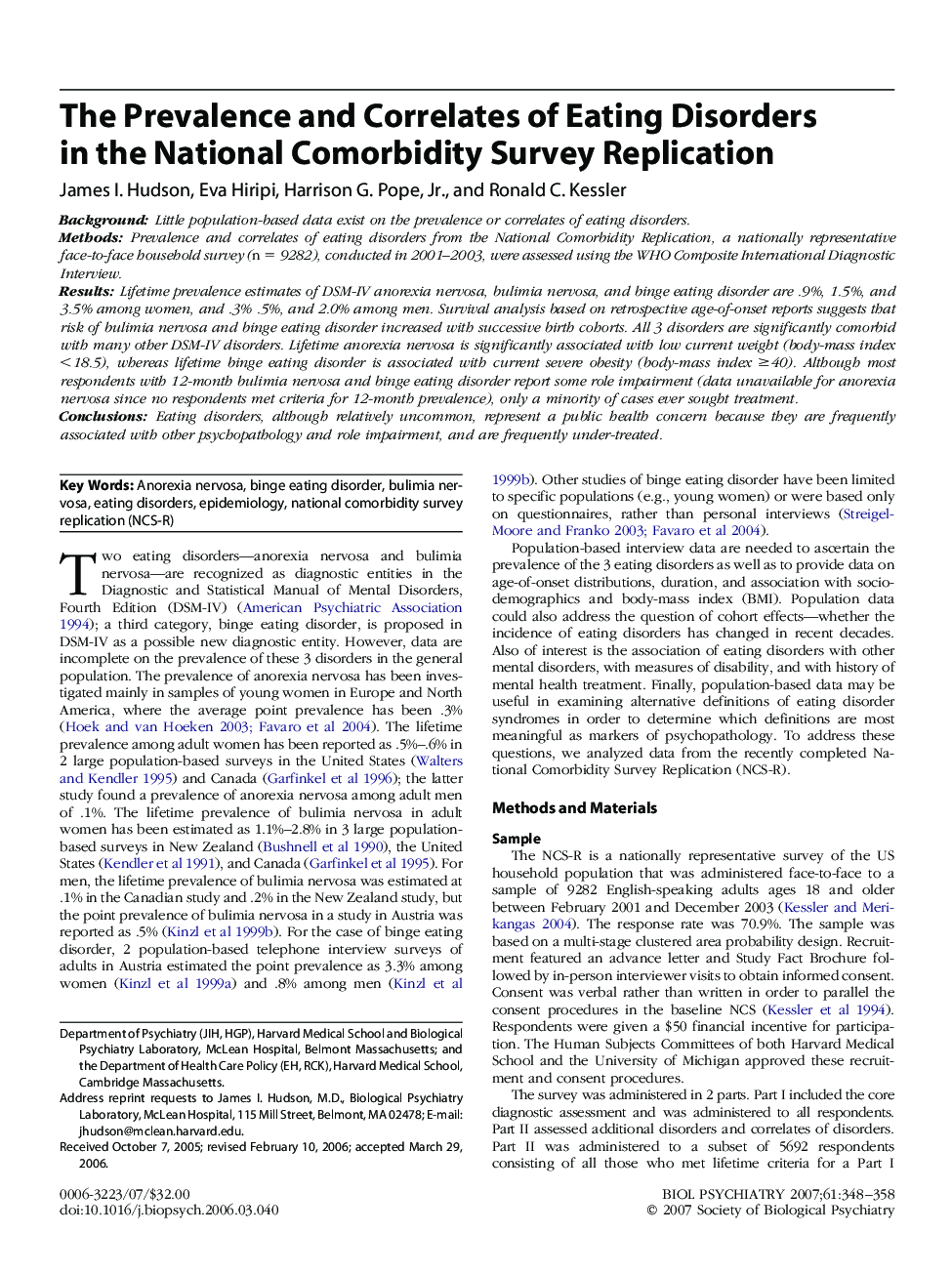| Article ID | Journal | Published Year | Pages | File Type |
|---|---|---|---|---|
| 4181177 | Biological Psychiatry | 2007 | 11 Pages |
BackgroundLittle population-based data exist on the prevalence or correlates of eating disorders.MethodsPrevalence and correlates of eating disorders from the National Comorbidity Replication, a nationally representative face-to-face household survey (n = 9282), conducted in 2001–2003, were assessed using the WHO Composite International Diagnostic Interview.ResultsLifetime prevalence estimates of DSM-IV anorexia nervosa, bulimia nervosa, and binge eating disorder are .9%, 1.5%, and 3.5% among women, and .3% .5%, and 2.0% among men. Survival analysis based on retrospective age-of-onset reports suggests that risk of bulimia nervosa and binge eating disorder increased with successive birth cohorts. All 3 disorders are significantly comorbid with many other DSM-IV disorders. Lifetime anorexia nervosa is significantly associated with low current weight (body-mass index <18.5), whereas lifetime binge eating disorder is associated with current severe obesity (body-mass index ≥40). Although most respondents with 12-month bulimia nervosa and binge eating disorder report some role impairment (data unavailable for anorexia nervosa since no respondents met criteria for 12-month prevalence), only a minority of cases ever sought treatment.ConclusionsEating disorders, although relatively uncommon, represent a public health concern because they are frequently associated with other psychopathology and role impairment, and are frequently under-treated.
